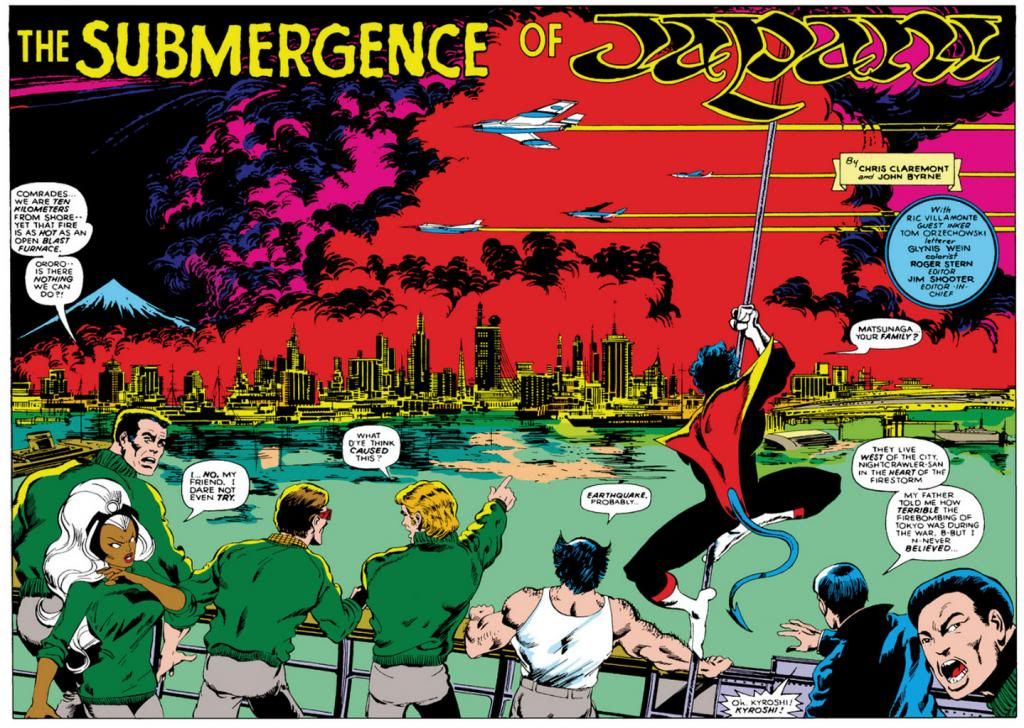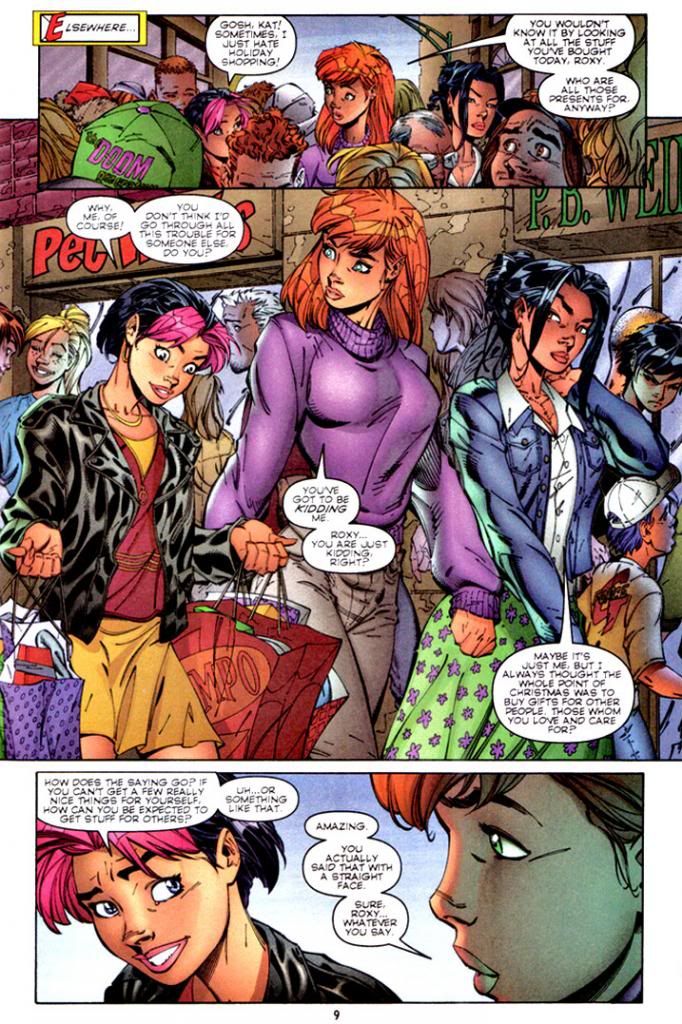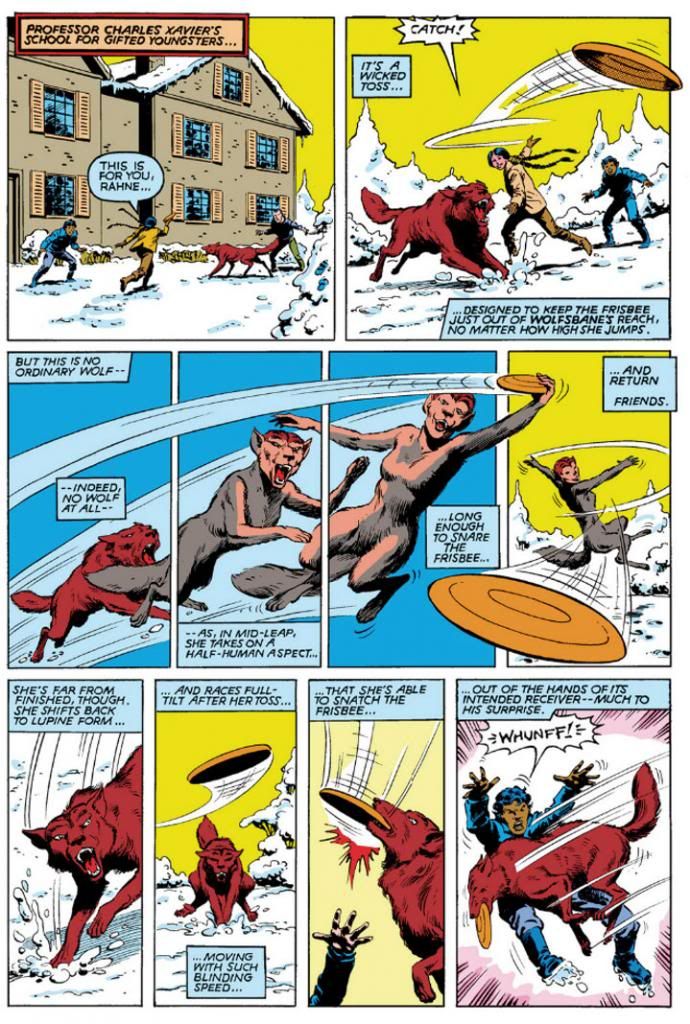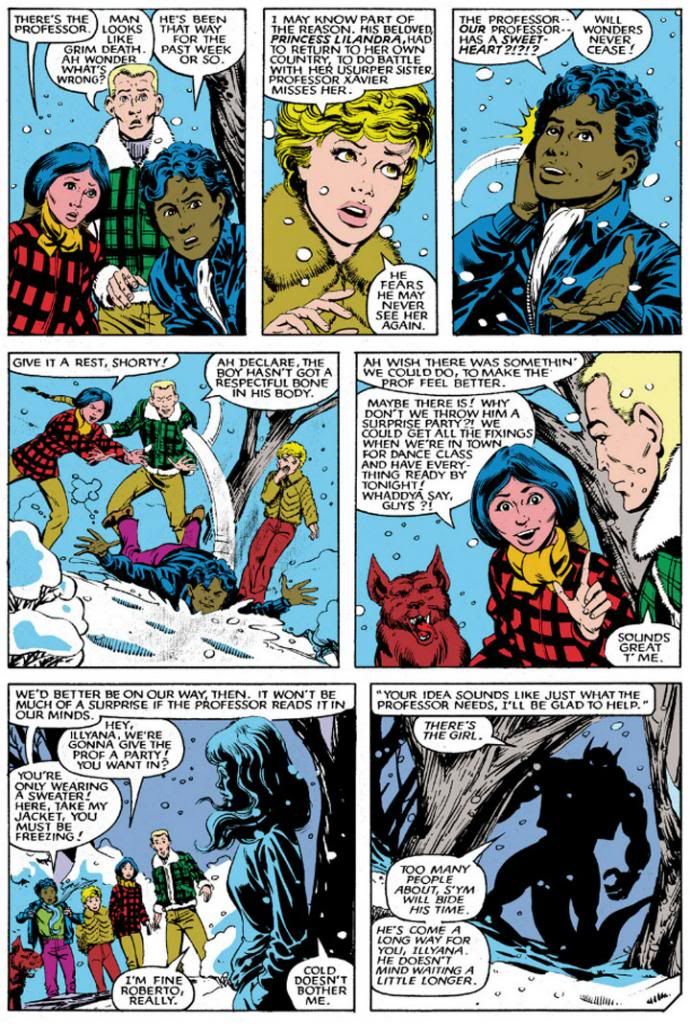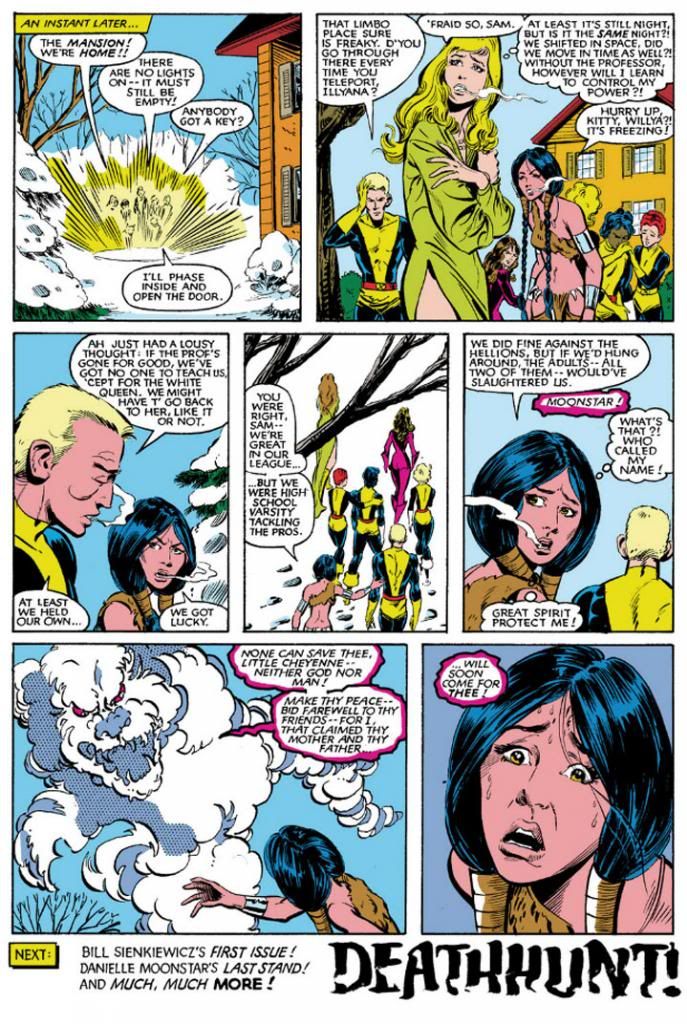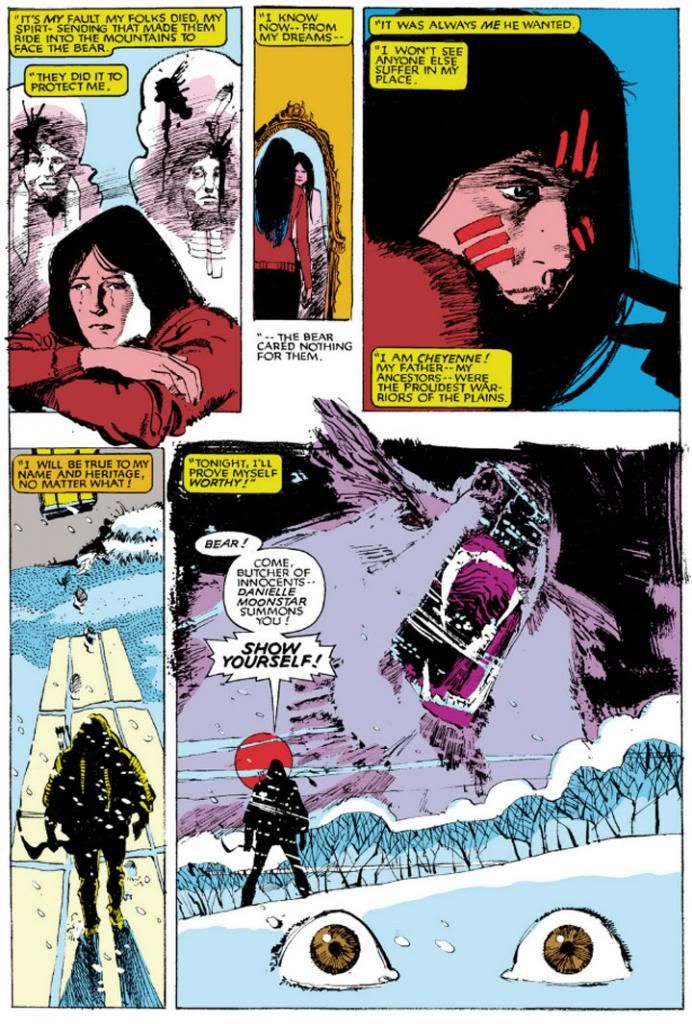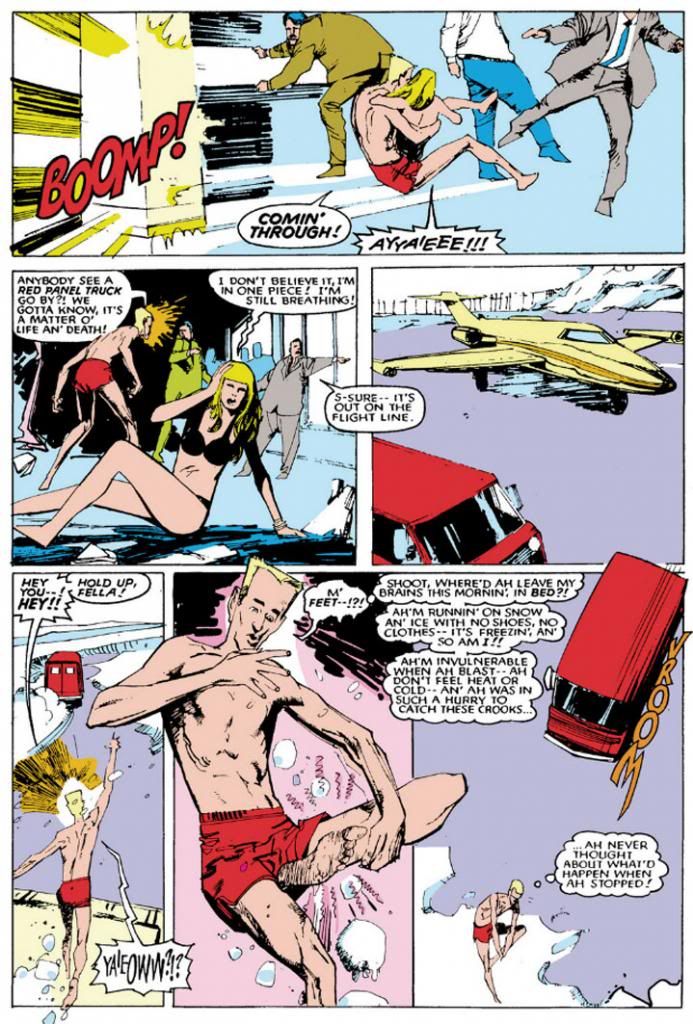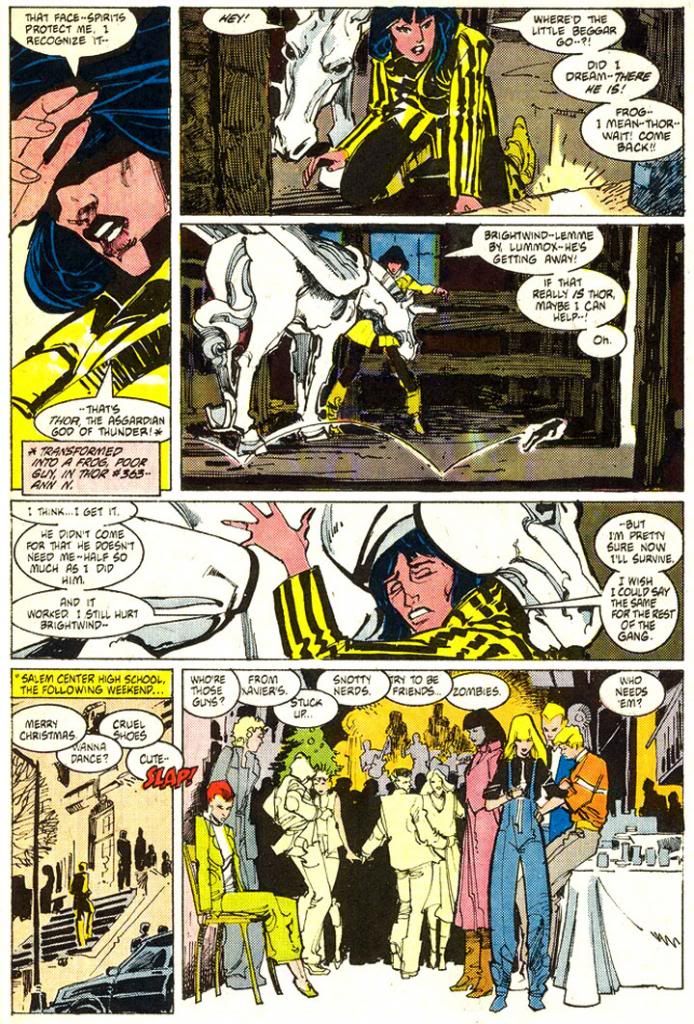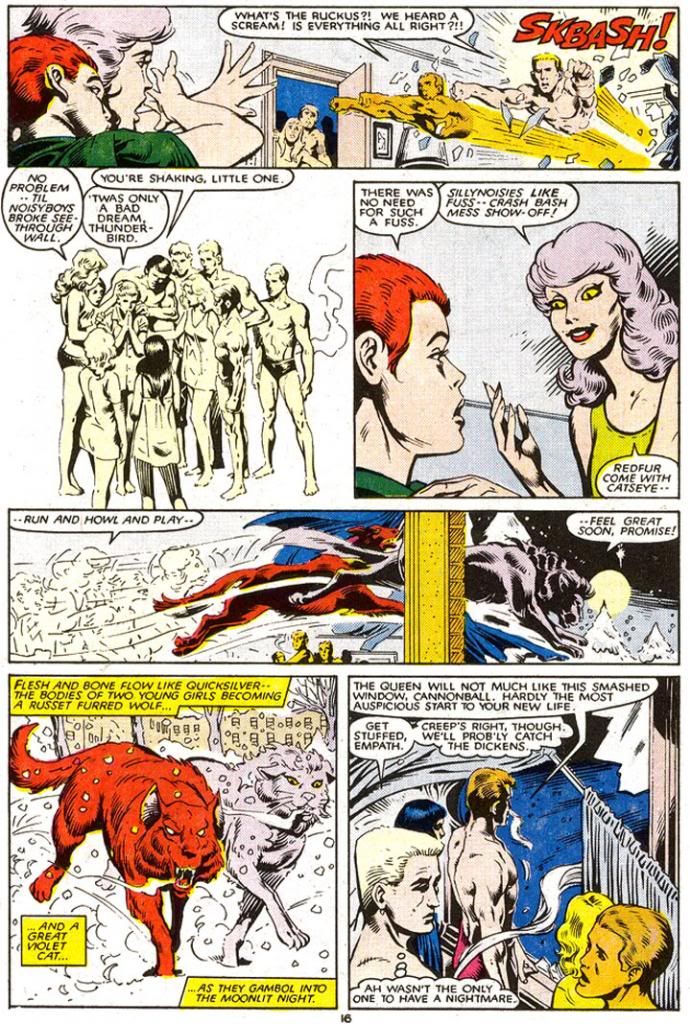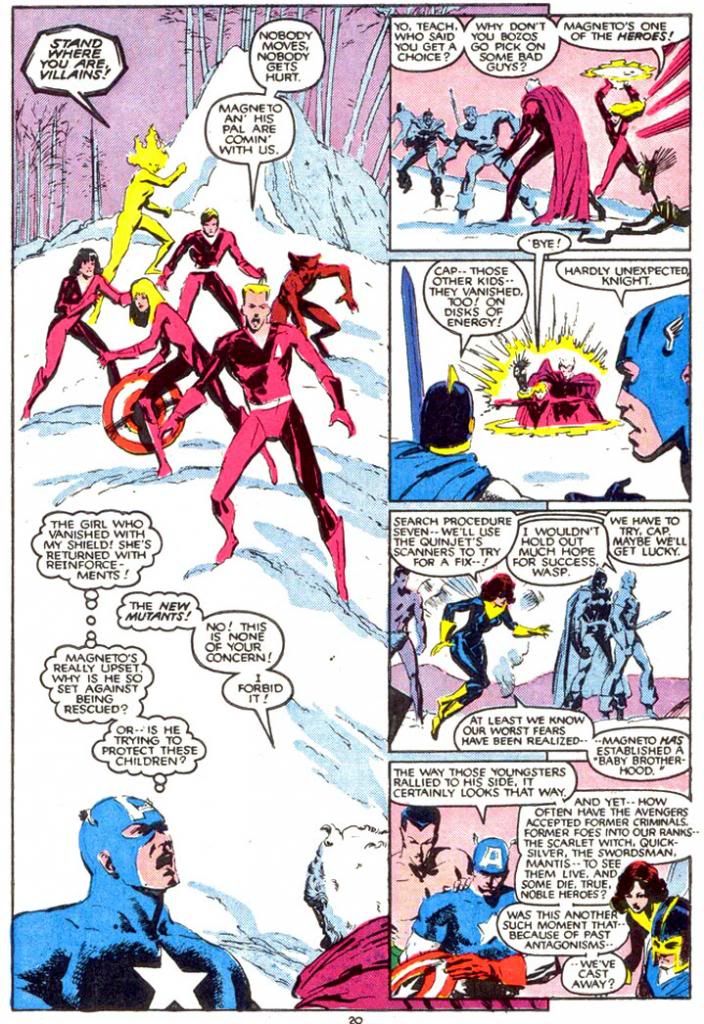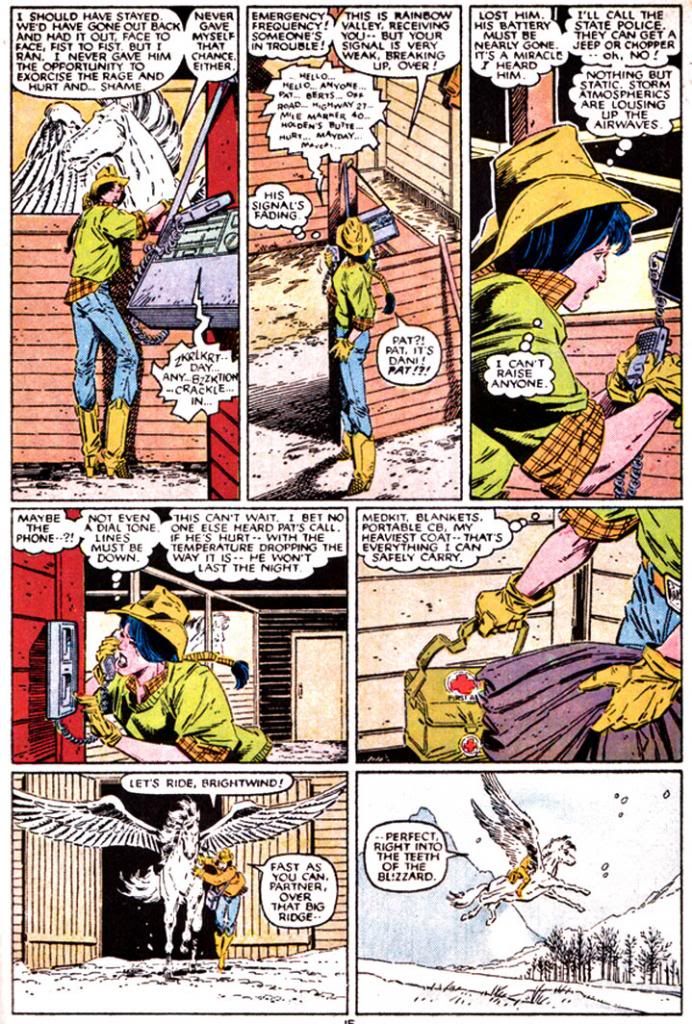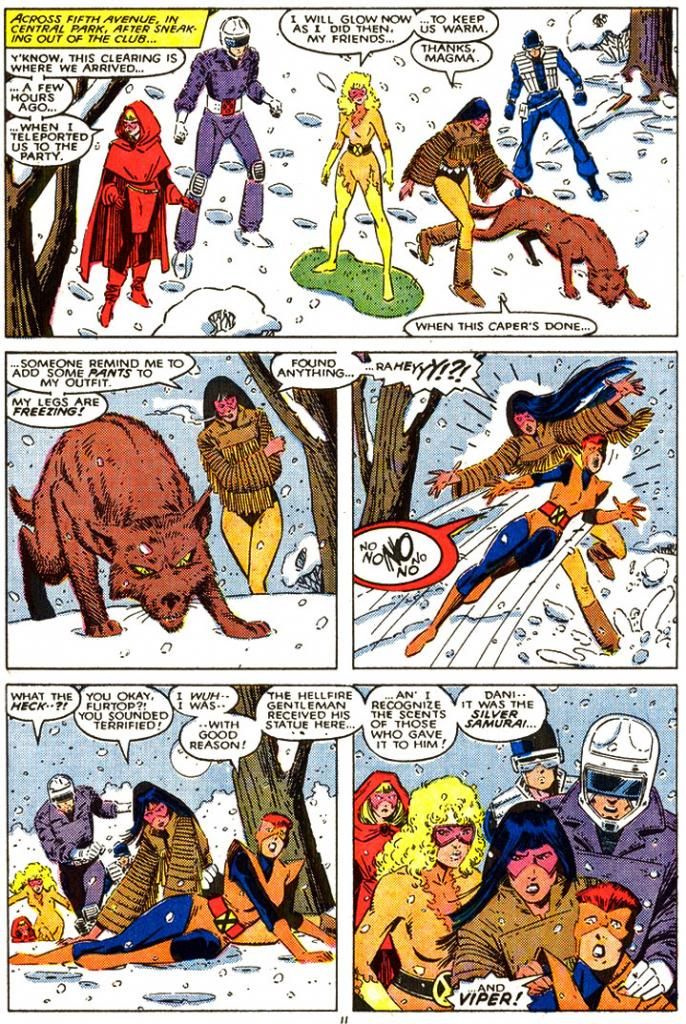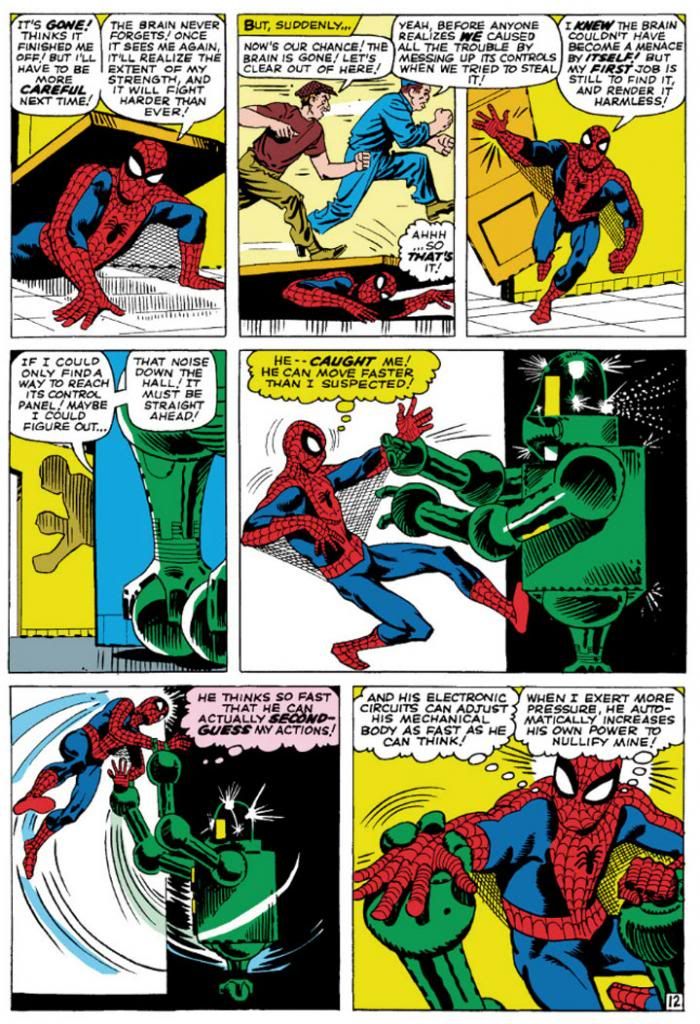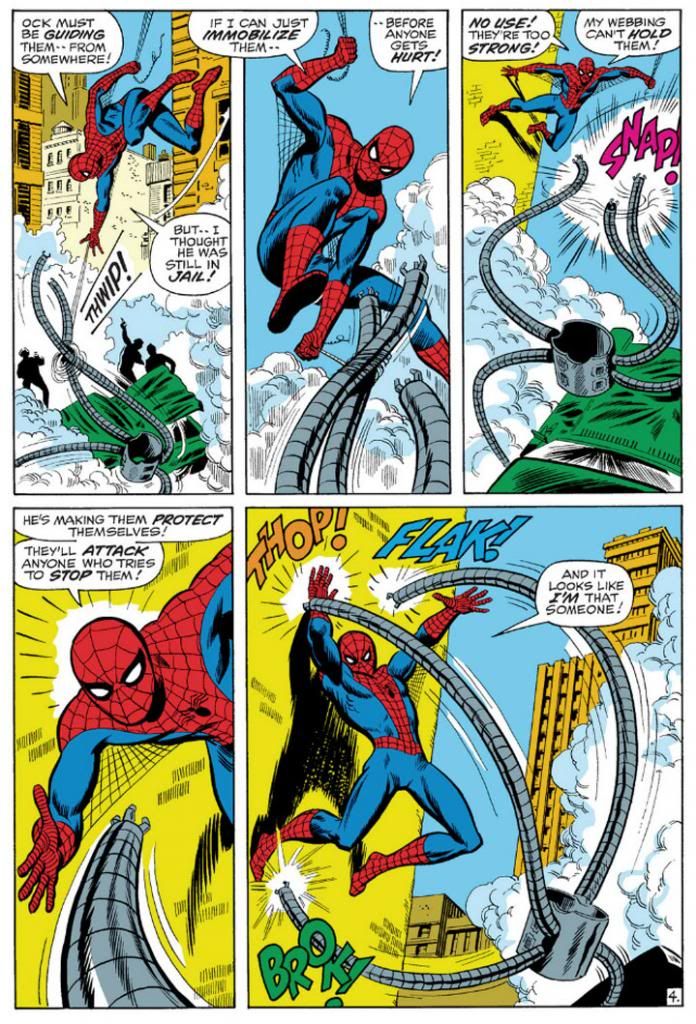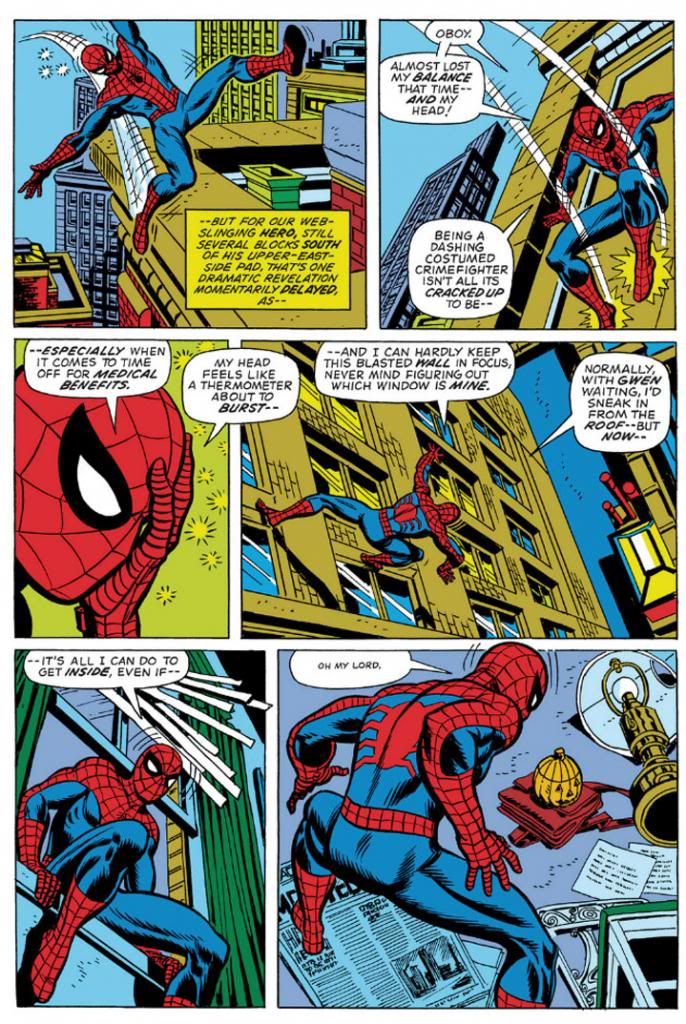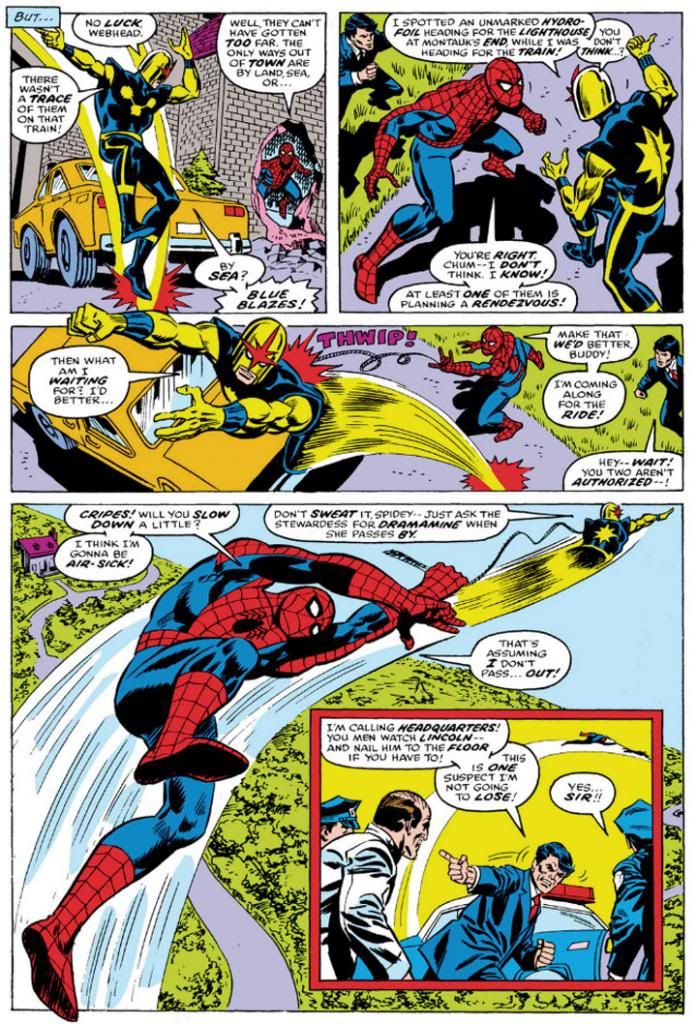First we're going to talk about 1981's
Dragonslayer and the Marie Severin-illustrated comic book based on it, and then I'm going to tell you why I'm including Eddie Deezen (who had nothing to do with the making of either) in this sentence
.
Dragonslayer is,
I suppose, a cult favorite these days. Maybe it was a little too obvious the spawn of
Star Wars (naïve young man on a hero's quest, spunky love interest, old mentor, pre-dating George Lucas but owned by him after May 1977) ever to strike box office riches. But ten of us like it. We don't have any cultish rites as yet, but we're working all that out at our monthly meetings that always take place at the stroke of midnight during the new moon period.
Dragonslayer has so many wonderful qualities, it's long overdue for nostalgia-hungry Internet people to brave its shadowy, flame-scorched lair and bring it forth into the dawn of its new age of popularity. There are winning performances from Peter MacNicol (later one of the best things about
Ghostbusters 2, and an absolute riot as an enthusiastically boneheaded camp counselor in
Addams Family Values), Caitlin Clarke and, in the role of wise wizard, Sir Ralph Richardson (doing that Obi-Wan thing
Star Wars made a requirement of older British actors in the 70s and 80s). It has a powerful score by Alex North (a movie music master who also scored Stanley Kubrick's
Spartacus and worked on the director's
2001: A Space Odyssey before Kubrick decided to use classical pieces). Not the least among all these estimable qualities is its dragon, the mighty Vermithrax Pejorative, brought to fierce, fiery life by Phil Tippett and a lot of talented special effects geniuses at ILM through the magic of their "go motion" process and some full-sized body parts. Vermithrax Pejorative is the movie dragon by which all others must be judged and found wanting.
The story takes place in the Dark Ages (
which weren't really as dark as modern myth makes out; we prefer to call those days the early Middle Ages). A kid named Galen is a sorcerer's apprentice and Urland, a nearby kingdom, has a nasty dragon infestation consisting of our friend Vermithrax and her babies. The king there has instituted a lottery whereby they randomly choose a maiden to dress like a bride and feed the dragon. As in, the dragon feeds on her. A deputation from Urland comes to visit Galen's boss, the renowned wizard Ulrich. A mouthy boy Valerian in the party turns out to be a spunky girl in disguise and it's not long before she and Galen are making goo-goo eyes at each other. Eventually, the youngsters have to confront Vermithrax and put an end to the death and destruction even if it means also eliminating the last vestiges of magic and fun in the world.
Let's wait for a minute or two while pop culture rights itself and this movie gets the acclaim it deserves. There. Now
Dragonslayer has ascended to its rightful place as one of the great films.
After striking riches
Jed Clampett-style with its
Star Wars adaptation, Marvel wasn't about to let any other comic company join in the fun and profit so they started licensing practically every sci-fi or fantasy movie out there and releasing them in deluxe magazine format they called the
Marvel Super Special. The bigger, prettier print jobs favored instant classics like my beloved
Close Encounters of the Third Kind and the lushly beautiful Archie Goodwin-Al Williamson adaptation of
The Empire Strikes Back.
This also led to some really strange and wonderful comic freakshows like
Marvel Super Special #17: Xanadu, the Illustrated Story.
Imagine that-- a whimsical Olivia Newton-John musical as a comic book! I guess having missed out on the
Grease lucre really burned Marvel's collective bums. Too bad
Xanadu became a notorious flop as a film and an oddity of a comic book.
Dragonslayer, on the other claw (whoa, steady there, boy, don't get too stupid too fast), was a natural choice to make into a comic. For one thing, it has few, if any, song and dance numbers to translate into pen and ink and scattered prose. And for another, witness Marvel's success with fantasy properties like
Conan the Barbarian,
Kull the Conqueror and
Red Sonja. Conan was making semi-regular appearances in
Marvel Super Special and Marvel had previously devoted three whole issues to their homegrown Doug Moench fantasia
Warriors of the Shadow Realm, also known as
Weirdworld.
Denny O'Neil's charming script hits the proper story beats, as expected. But what O'Neil also does so well is illuminate the film's underlying themes of changing ages. He doesn't miss the subtle tragedy of both Ulrich and Vermithrax being the last of their respective kinds.
But here's the best part. Marie Severin is an absolutely inspired choice for art duties on
Dragonslayer. Among her many scattered Marvel art jobs penciling and inking characters like Namor and Spider-Man, Severin had already provided interiors for Marvel's
Kull comics, and covers for that series and
Conan the Barbarian. Strong prep for
Dragonslayer.
This art is pure joy. Maybe it's due to her humor comics background, but Marie Severin absolutely aces the "acting," which I find many artists ignore or else botch completely. In comics, true masters of acting are rare. Comic book artists tend to pose their characters in weird, inhuman ways with every muscle tensed rather than develop unique body language. And blank expressions when nothing much is happening, or downcast eyes when characters feel sad, or clenched teeth with neck tendons and veins bulging to the point of bursting for every other emotion. Big, simplistic takes on big, simplistic feelings. There are action scenes and plenty of screams and curses in
Dragonslayer, but there are also a lot of moments where quirky people simply talk to each other. If the characters turn into blank-faced nothings seemingly reproduced from clothing store mannequins, readers miss out on the mood and character personalities. An artist is responsible for this stuff, too, not just the punches and kicks.
On
Dragonslayer, Severin takes time to draw individual expressions and well-observed poses for every character on the page and really brings them to life. Especially vivid is the unearned cockiness Galen displays right before the king tosses him in a dungeon as a big phony. But even the kids Galen entertains at a celebration each have unique facial expressions that tell us what they're thinking and enrich the moment. Some are delighted, some are a bit more dubious. Are they important? Maybe not, but Severin apparently felt it was necessary to go above and beyond, and I applaud.
She also does a lot to build the world these people inhabit. Aided by some ornate inking by John Tartaglione, Severin packs the pages with images that recreate in two dimensions the film's funky, lived-in production design.
Dragonslayer's Dark-- er-- early Middle Ages were not those of fairy tale or chivalrous legend, despite the scaly menace of Vermithrax and the magical story elements. It's more like the one from
Monty Python and the Holy Grail: dirty and smoky, with tumble-down castles falling to ruin. Especially spectacular are the pages inside Vermithrax's lair-- Severin colored the book as well, and the lighting effects she manages on these pages raise the room temperature. You can almost feel the heat and smell the stink of burning oil and sulphur.
The only flaw in her storytelling is she tends to minimize Vermithrax. We get one massive head as the dragon glares at Galen but for the most part Severin confines the great beast to smaller panels. A full-page panel of Vermithrax in flight, spewing flame, would have been perfection. As if to make up for that, Severin and Tartaglione do a knock out job on Vermithrax's baby dragons. Valerian calls them basilisks, but I prefer the term kittens. Dragon young should be called kittens. The artists render the dragon kittens in loving close up so we get to see every bump and scale.
Anyway, it's a good looking book. The Earl Norem triptych cover pretty much sums up the magic that is
Dragonslayer. Maybe if they'd used it as the movie's one sheet it might have fared better at the box office. Or not. Such visual riches shouldn't be hoarded and hidden away by dragons-- it needs a reprinting at once. Casiordorus Rex demandeth it! Snap to it, people! Chop chop and lickety-split!
Handle it, Roy, handle it! Handle it! As long as there isn't a joyless, rote, CGI-heavy remake with Sam Worthington as Galen and Megan Fox as Valerian. Or some CW Network refugees. There's no way some sullen-faced former underwear models could compete with the charms of MacNicol and Clarke.
Okay, back to Eddie Deezen.
Dragonslayer director Matthew Robbins also directed 1978's
Corvette Summer, the movie where Mark Hamill builds a custom Corvette Stingray only to lose it to a sleazy auto shop owner/car theft ringleader played by Kim Milford, who essayed lead schlub Billy Duncan in
Laserblast, a low-budget sci-fi revenge flick (mocked impressively by
Mystery Science Theater 3000 at the end of its seventh season).
Laserblast is where Eddie Deezen made his film debut.
Marvel Super Special #4 The Beatles Story is a comic book biography of those four lads from Liverpool. Eddie Deezen knows more about the Beatles than you and I put together ever will. Eddie Deezen turned down a role in the Bill Murray-starring hit
Meatballs for a part in the John Belushi-and-Dan Akyroyd-starring flop
1941. Eddie Deezen voiced Mandark on
Dexter's Laboratory.
The Beatles, Marvel Comics,
Laserblast,
Corvette Summer,
Dragonslayer,
Dexter's Laboratory: they all come around in the end to Eddie Deezen. We like Eddie Deezen as much as we like Marie Severin.
